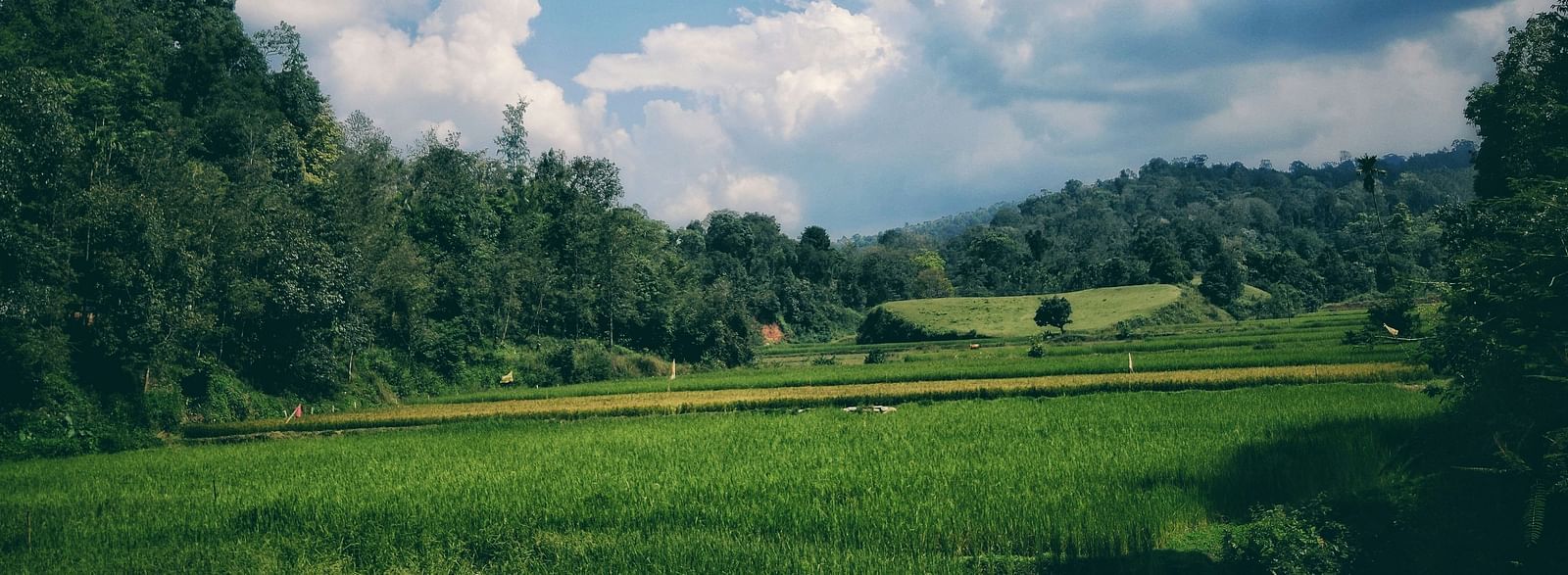
Explore Karnataka
Shreyas is a destination on its own, encompassing the entire gamut of health, wellness, fitness, rejuvenation, detox, and restorative therapies in luxurious surroundings nestled in the lap of nature. For guests who are interested in exploring Southern India, there are plenty of options, including ancient temples, magnificent palaces, game reserves, tea estates, beaches, and more.
Srirangapatna
Srirangapatna, located around 149 km from Shreyas, is an island fortress city with religious, cultural, and historic importance. It is situated about 14 km from Mysore on the banks of the river Cauvery. For a short while, the city of Srirangapatna was the capital of the Mysore state while Tipu Sultan ruled Mysore. After the death of Tipu Sultan in 1799, the British shifted the capital back to Mysore. The town, temples, mosque, and other historical monuments are surrounded by a strong stone fort with four gates.
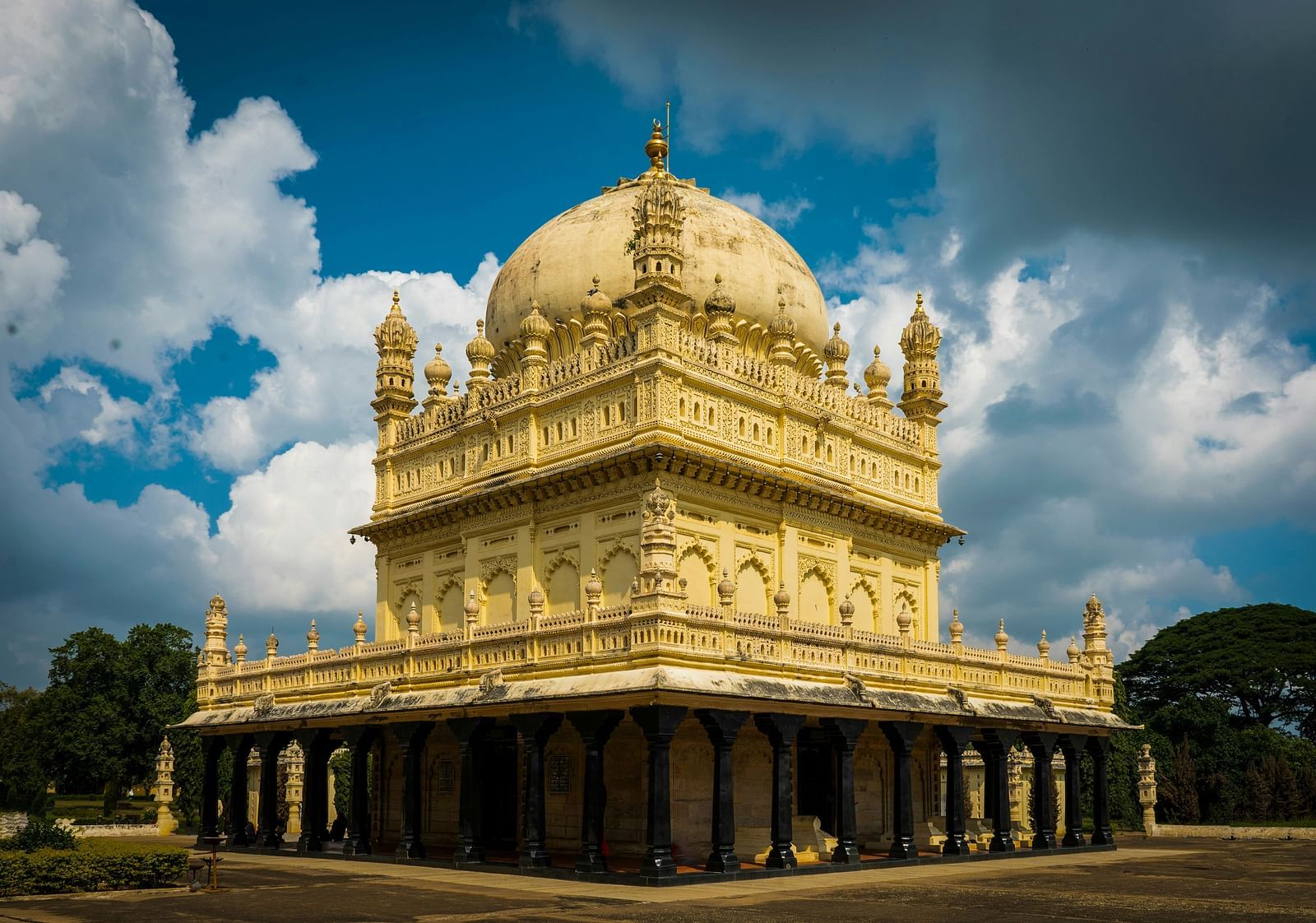
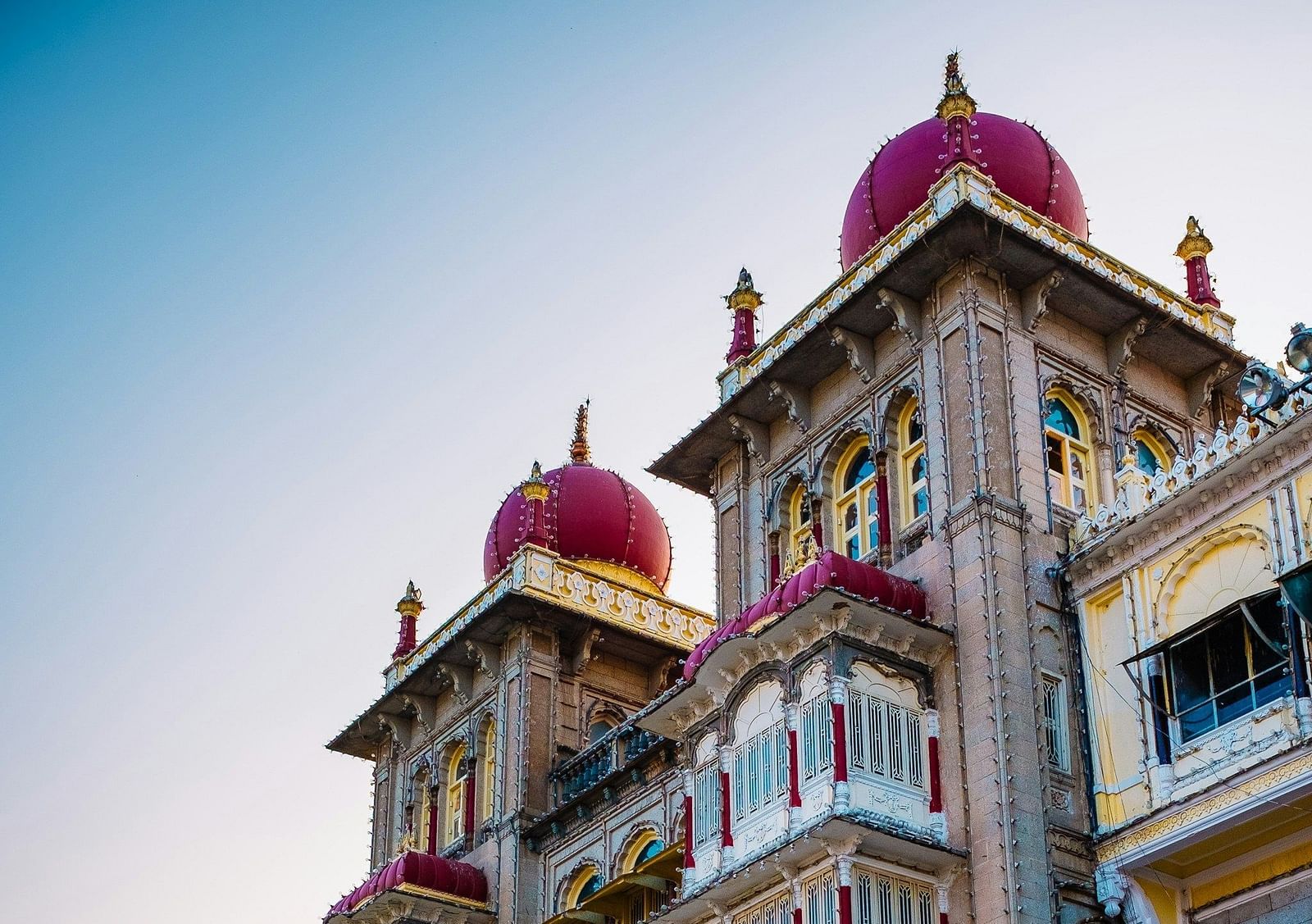
Mysore
Mysore, also known as the cultural capital of Karnataka, is 165 km from Shreyas (about 3 hours by car). Mysore, or Mysuru, was once the capital of the erstwhile princely state of Mysore. Now, Mysore is the third-largest city in Karnataka, India. The Mysore Maharaja Palace is one of the most visited monuments in India. One of the largest palaces in the country, also known as Amba Vilas Palace, was the residence of the Wodeyar Maharajas. The Mysore painting style is an offshoot of the Vijayanagar School of painting, and King Raja Wodeyar IV is acknowledged as a patron. The distinctive feature of these paintings is the gesso work to which gold foil is applied.
Bandipur
Bandipur National Park, located around 239 km from Shreyas, is one of India's most beautiful and well-managed national parks. Located amidst the picturesque surroundings of the towering Western Ghat Mountains on the Mysore-Ooty highway in Karnataka, Bandipur National Park covers an area of about 874.2 sq. km. Together with Mudumalai Wildlife Sanctuary in Tamil Nadu, Wayanad Wildlife Sanctuary in Kerala, and Nagarhole National Park in the North, it creates India's biggest biosphere reserve, popularly known as the 'Nilgiri Biosphere Reserve'.
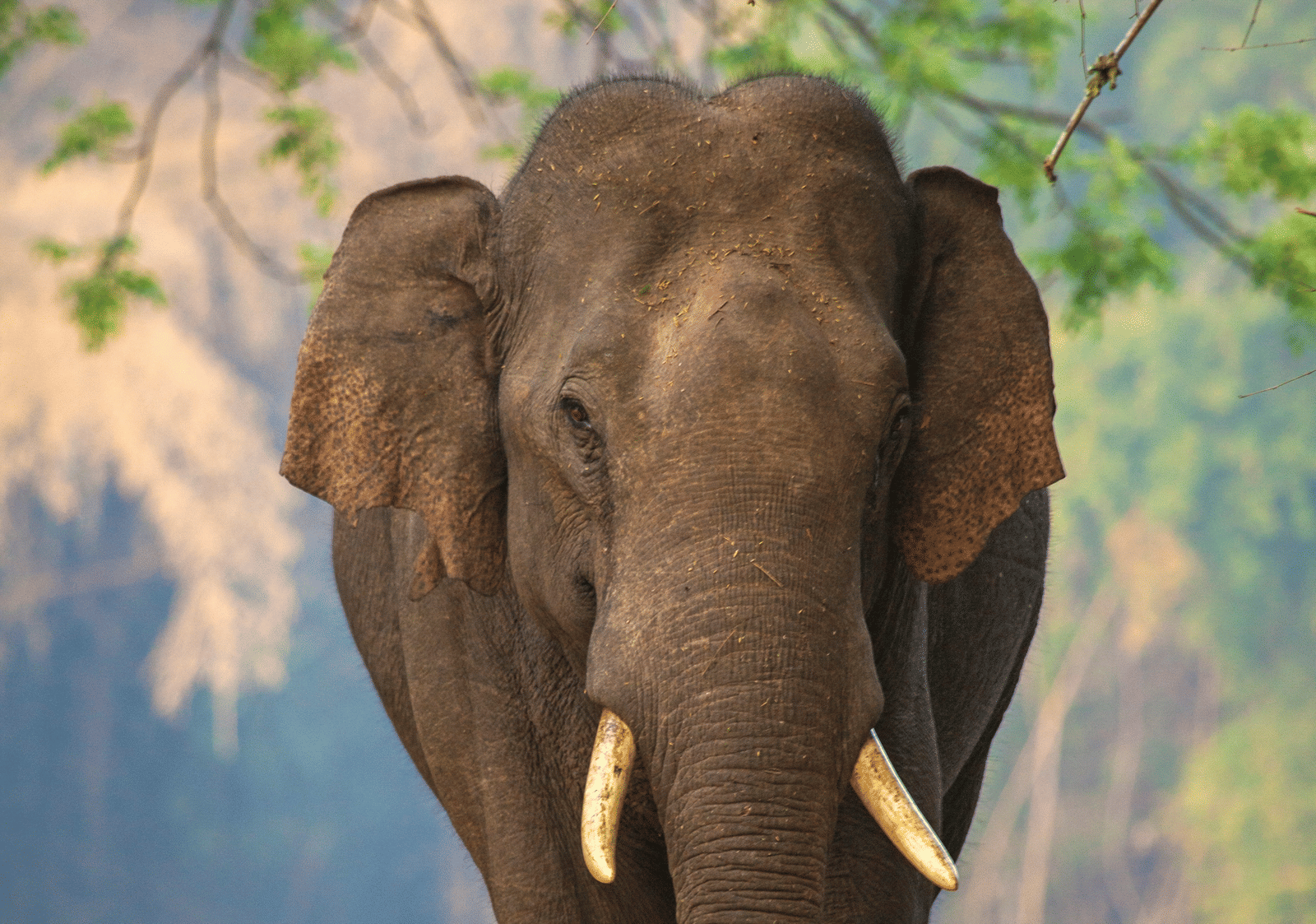
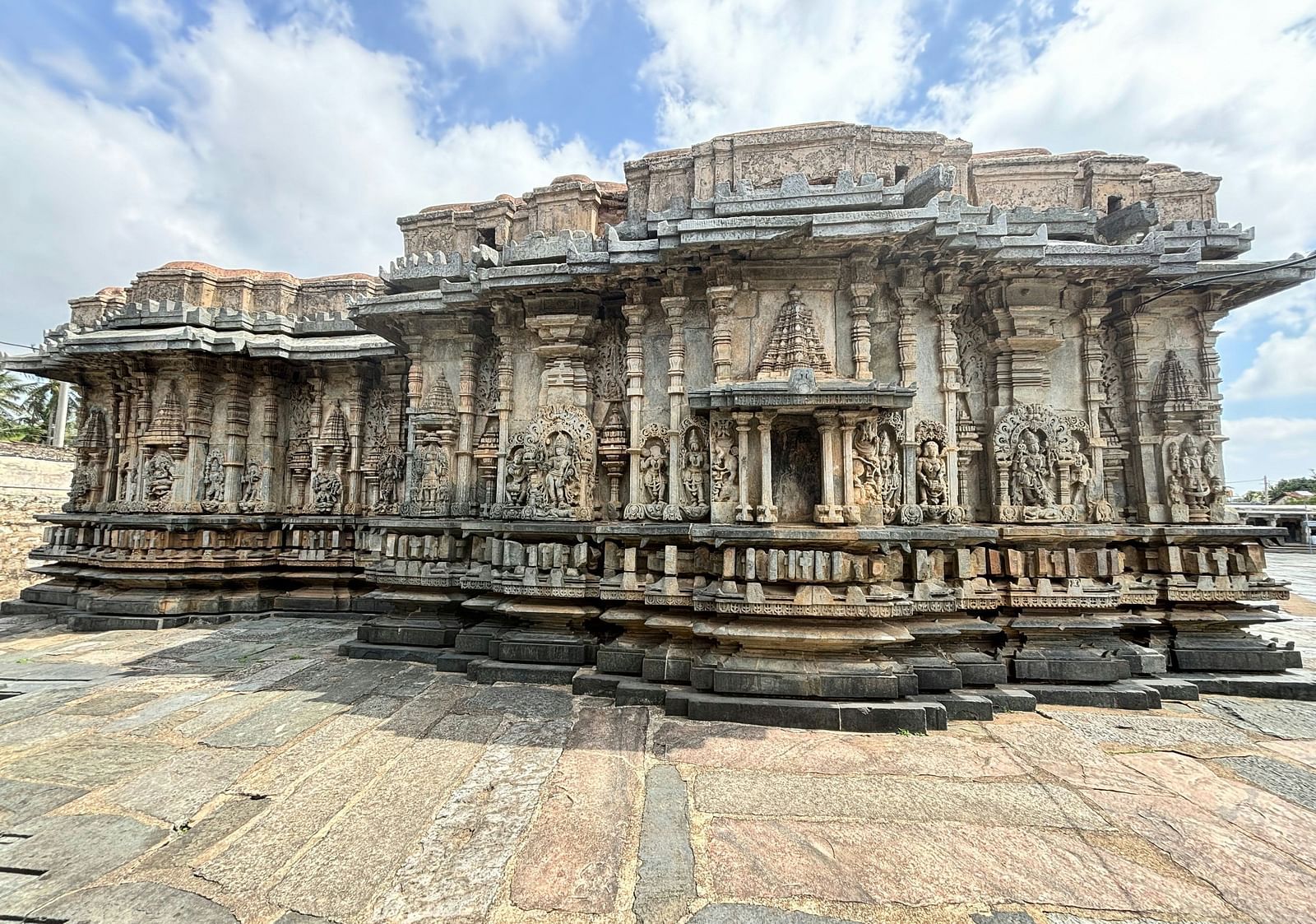
Halebeedu
Halebeedu, a small town in the Hassan district, is known for its temples built during the Hoysala period. Along with Belur and Shravanabelagola, Halebeedu forms the Golden Triangle of Karnataka tourism. The word Halebeedu means 'ruined city'. Earlier, it was called Dwarasamudra, which meant 'entrance to the ocean'. Halebeedu was the royal capital of the Hoysala Empire in the 12th century. This town is located around 191 km from Shreyas.
Belur
The ancient city of Belur, located on the banks of the Yagachi River in the Hassan district, is cloaked in mystique. It was previously called Velapura. Belur was chosen as an alternate capital city by the Hoysala dynasty after the attack and subsequent destruction of their capital, Dwarasumudra (now known as Halebeedu), by the sultans of Northern India. The best of Hoysala monuments are found in Belur. The innovative architecture and beautiful sculptures draw several thousand every year to both Belur and its twin city of Halebeedu. Visitors must see the exquisite Chennakesava Temple, which took 100 years to complete. It was finished in 1117 CE. Belur is located around 200 km from Shreyas.
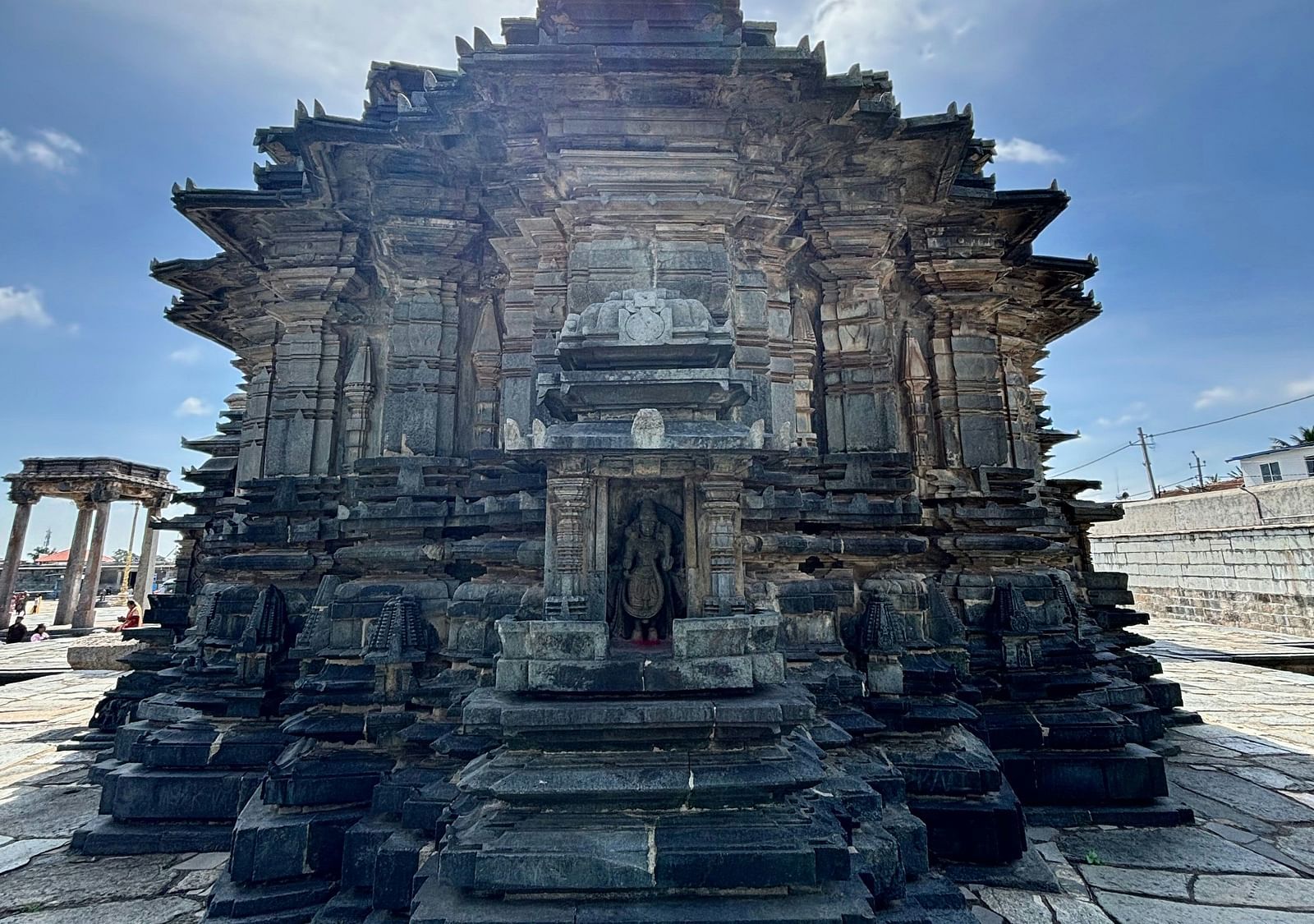
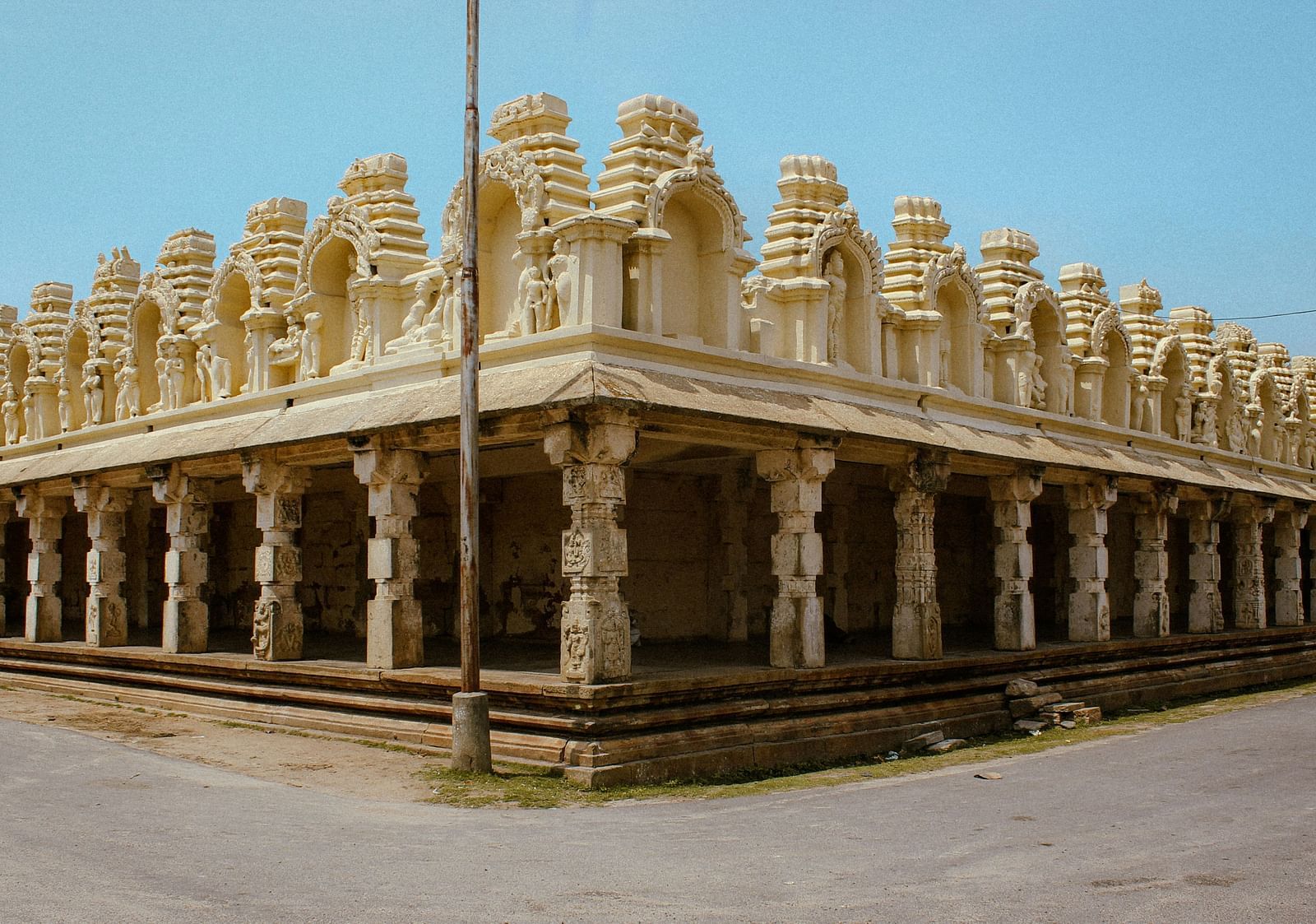
Shravanabelagola
Shravanabelagola, located around 125 km from us, is a veritable picture postcard of history spanning centuries. It is nestled by the Vindhyagiri and Chandragiri Hills, protected by the monolith Bhagawan Bahubali, and home to 2,300 years of heritage. The Lord Gomateswara Monolith in Shravanabelagola is one of the oldest (AD 918) and most important Jain pilgrimage sites. This 59-foot statue of the naked Lord Gomateswara—a representation of Bahubali, son of the 1st Jain Tirthankara, said to have sought enlightenment by standing naked and motionless for an entire year—is the tallest monolithic statue on Earth.
Jog Falls
Jog Falls, the second-highest plunge waterfall in India, is situated in the dense evergreen forests in the Shimoga district, Karnataka. The falls are located around 398 km from Shreyas, at the heart of the Western Ghats. The Western Ghats gives rise to the Sharavati River, which plunges from a height of 829 ft. in four magnificent cascades, namely Raja, Rani, Roarer and Rocket. Jog Falls, also known as Gerusoppaa Falls, is the highest untiered waterfall in India, as it drops directly and does not stream onto the rocks. August to December is considered the season of the best flow and the best time to visit.
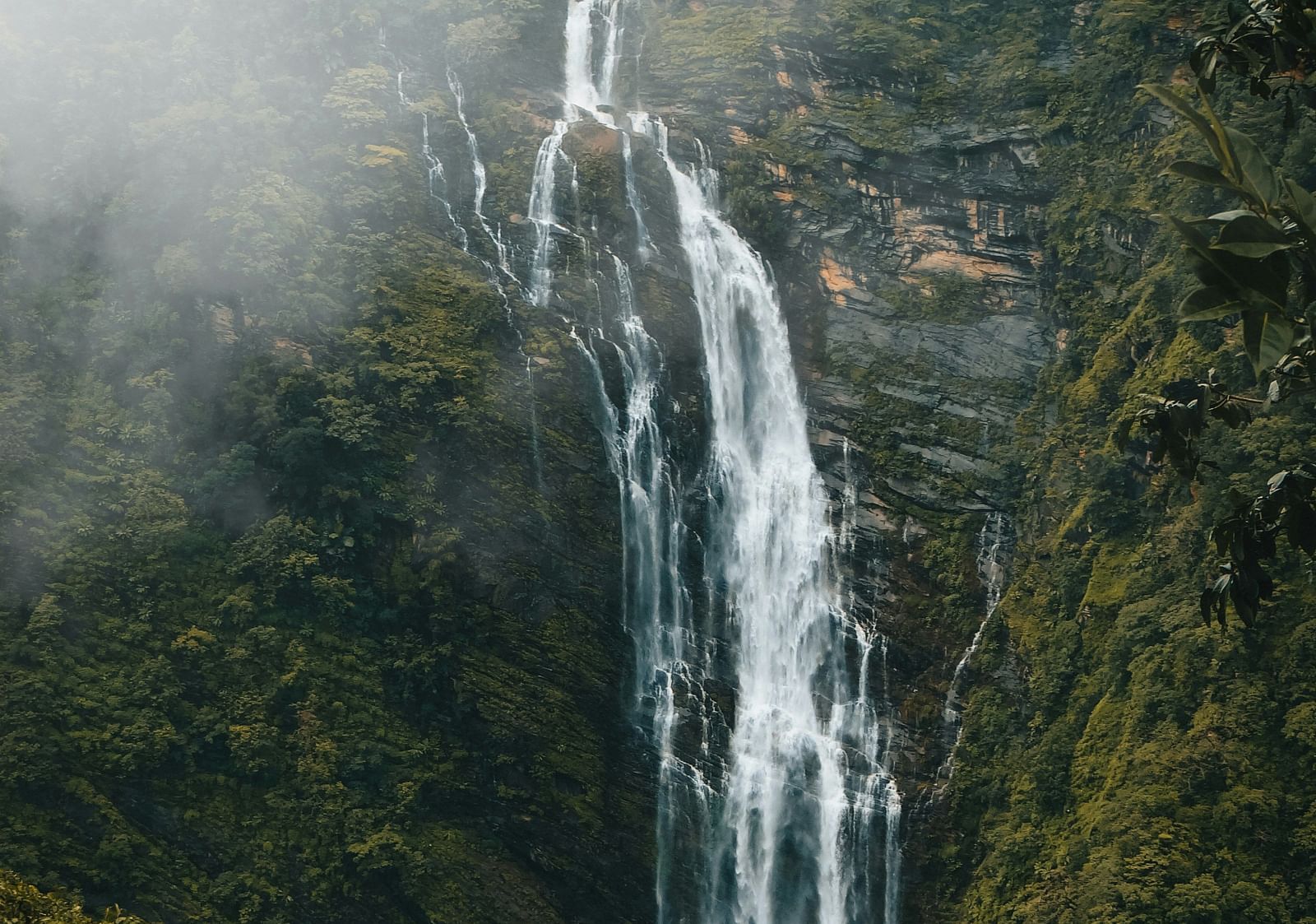

Coorg
Coorg is a wonderland of misty mountains, streams, waterfalls, tropical forests and miles and miles of tea, coffee, paddy and spice plantations. Coorg, or Kodagu as it is officially known now, is an unspoilt 'country of a million hills', situated on the slopes of the Western Ghats. Coorg is India's coffee bowl. The tiny district in the state of Karnataka is the biggest producer of coffee. It is well known for its breathtakingly exotic scenery and lush greenery. Forest-covered hills, spice and coffee plantations make this a nature lover's delight. Coorg is 246 km from Shreyas.
Hampi (A UNESCO World Heritage Site)
Scattered among the Henry Moore-like boulders in the heart of Karnataka's rural interior, Hampi was once the royal seat of the powerful Vijayanagar kingdom, its size and wealth drawing comparisons with Imperial Rome. Today, the city has crumbled away to a few starkly beautiful leftovers, but the remote setting could not be more romantic. Hampi is charismatic even in its ruined state, attracting thousands of visitors every year. Vast stretches of boulder-strewn hills make the backdrop of Hampi unique. Dotted around the hills and valleys are 500-plus monuments. Located around 329 km from Shreyas, Hampi continues to captivate history and architecture enthusiasts alike.
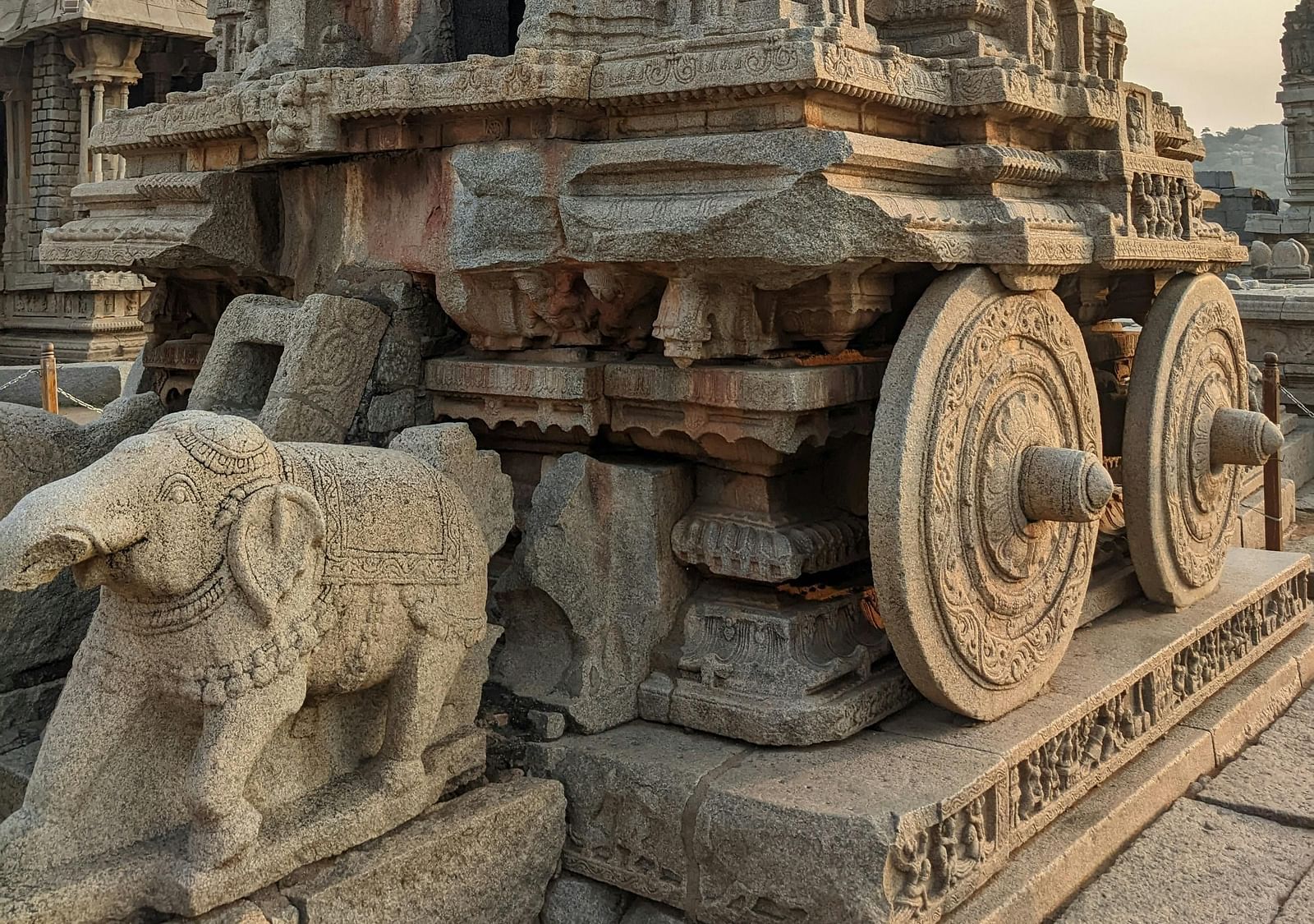
Temples Around Shreyas
Shani (Saturn) Temple
Saturn is the bestower of Wisdom (not just knowledge) through experiences and hardships. The crow is Saturn's vehicle—it consumes unwanted waste in the environment to enable fresh life and recycle waste. Saturn is the slowest but steadiest of the planets. These are his characteristics when he confers benefits. Saturn is the only Navagraha (the nine planets in Indian Astrology), which is called Ishwara (God). As wisdom is required to wade through the maze of life unscathed, he is bestowed with such honour.
The temple is around 7 km from Shreyas. People visit here to propitiate Saturn and pray to him to ward off impending or present difficulties in life. Villagers bring all their new vehicles and have the ritual done here before they start to use them.
Anjaneya (Hanuman) Temple
As per Hindu mythology, Anjaneya is the son of Anjana, belonging to a tribe that resembled monkeys that once inhabited the southern regions of Indian forests. He is born to Anjana and the air element (Vayu). Because of this, he acquired the ability to fly at will; incidentally, it is one of the 8 supernatural powers yogis (ones who have mastered the senses) possess. He is a Chiranjeevi, a person who lives on forever till Pralaya (end of the world). He is an ardent devotee of Lord Rama and was His messenger to the court of Ravana, the demon king of Sri Lanka.
From the ancient Roman emperor Marcus Aurelius to today's modern psychologists, it is believed that 'What we contemplate, that we become'. In these lines, a contemplation on Hanuman is said to bestow the worshipper with astuteness, strength (including physical, mental, and spiritual strengths), fame, courage, all-around health, talent for verbal fluency, fearlessness, etc.
The temple is around 3 km from Shreyas. It is renowned for its two yearly festivals in April–Hanuman Jayanti and Sri Rama Navami. The celebrations of the birthdays of Hanuman and His Lord, Sri Rama. A huge temple car with wheels made of granite is taken in procession around the village, and various cultural activities take place. This includes dramas with themes from Indian epics. The local fair is also organised around this time.
Vishnu Temple
Established by King Janamejaya of the Pandava clan, this temple’s deity, Venkataramana Swami, is believed to date back around 5,000 years. Swami is a suffix given to any entity that is considered to be holy and auspicious.
It is said that in the olden days, this entire place was full of forests and was under the rule of the aforesaid king. Apart from this, Sage Kountinya has done Penance (Tapas) in this location, and the temple pond that he created still lives in the name of 'Shank Pushkarani' (The Conch Pond). This is because the pond is formed in between the rocks that resemble a conch.
This temple is around 8 km from Shreyas.
Local Temple Tour Offered at Shreyas
Nelamangala, the town Shreyas is located in, is famous for its temples. During the approximately 2-hour temple tour, guests are taken to the Vishwa Shanti Ashram, a Hanuman Temple, and a Jain Temple.
Vishwa Shanti Ashram is a spiritual centre near Bangalore. The complex, spread over nearly 20 acres of land, has a number of beautiful temples and a park. At the front, there is the huge Vijaya Vittala statue, and inside there are the Ashtalakshmi temple, Gayathri Mandir, meditation hall with Bhagavad Gita Bodana, and Vishwaroopa statues. Below this statue is the Lakshmi Narayana temple. Spread on either side of this temple is the Ashtalakshmi Mandir, with the eight forms of Mahalakshmi. Further on, there are temples for Gayathri Devi, Navagrahas and Santhoshi Mata. At the centre is the Bhagavad Gita Mandir. To the right of this Mandir lies a series of statues representing the seven main holy rivers of India–Ganga, Yamuna, Saraswathi, Godavari, Narmada, Sindhu, and Kaveri. The Bhagavad Gita temple itself is constructed in the form of a chariot, with Arjuna seated at the back and Krishna, holding the reins of the horses, teaching him the philosophy of the Bhagavad Gita. Inside this chariot is a meditation hall with a large statue of Vishwaroopa Narayana, encompassing the ten avatars of Lord Vishnu. Opposite this temple, a Hanuman Mandir is worth a visit; you will find a very tall statue of Lord Hanuman. The third temple we visited was the Shree Parshwa Labdhi Jain Tirth Dham. This is a Jain temple located near Nelamangala on the outskirts of Bangalore. Just like other Jain temples, it is a white marble structure with beautiful carvings.